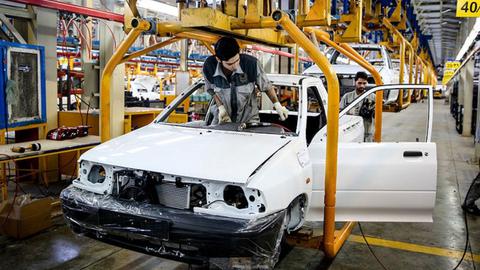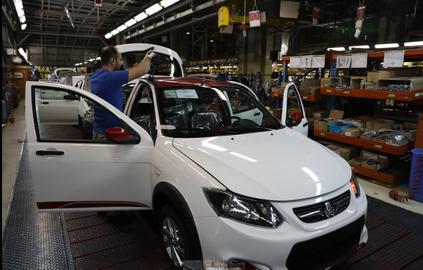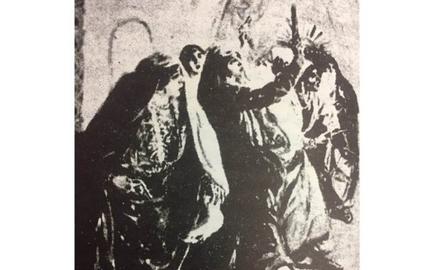The much-vaunted investigative report on corruption in the Iranian automative industry that was published on May 19 is an important document evidencing multi-layered corruption in this sector. But aside from a scattering of numbers and figures, it actually reveals nothing new.
Most of the cases discussed in this report were already known, and some had even been reported in the Iranian media before. But other notable cases have been ignored, leading one to suspect that there is some political skullduggery at work. The outgoing 10th parliament may well be settling accounts among its own members - or paying off debts.
As an official document, the report is inherently valuable. But in order to write it, no hard investigation and research was necessary. One would have expected more from so-called “investigative research” than what this report provides. The same document could have been produced by an independent group relying on publicly available information, and the news as reported by the Iranian media.
For one thing, an independent report would certainly have a separate chapter about corruption in the Iranian parliament’s Industries and Mines Committee. But this “investigative” report makes no mention of it. The corruption of Fereydoon Ahmadi, vice chair of the committee, and Mohammad Azizi, a member, went so deep that on May 16 this year a court sentenced them to multiple prison terms on charges such as “money laundering” and “significant disruption in the economic system of the country.”
This report, however, makes no mention whatsoever of the relations between car manufacturers and members of parliament, or the shady relations between Ministry of Industry, Mine and Trade and the committee that is supposed to hold it to account.
The word “minister” is not mentioned once in the report, even in the preamble, which only mentions that members of the investigative committee had met with “Dr.” Reza Rahmani, the “esteemed minister of industry and mines”. In fact, Rahmani is only a law graduate and has no PhD in any field despite his claim to the title “Dr”. Rahmani served as an MP for three terms and as chair of the parliament’s Industry and Mines Committee, played a major role in decisions about the automotive industry. A report about corruption in auto manufacturing sector cannot be considered unbiased or thorough if it makes no mention of the extensive relations between the industry and this minister, who was removed earlier this month.
Supreme Leader Gets Off Scot-Free
The report also makes no mention of institutions under the control of the Supreme Leader that are active in automotive industry. Last year, for instance, it was reported that shares in Parsian Bank that belong to the automaker Iran Khodro were to be transferred to Setad, otherwise known as the Headquarters for Executing the Orders of the Imam, a multi-sector business conglomerate supervised by Ayatollah Khamenei. Even Nasser Sarraj, advisor to the Judiciary Chief Ebrahim Raeesi and head of the General Inspection Office of Iran, confirmed the news. But we are still in the dark as to whether this apparently illegal deal went through or not, and the so-called Headquarters denied the reports as “rumors”. What kind of investigative report fails to even mention the most high-profile corruption that goes on both behind the scenes, and in plain sight?
The report mentions “the labyrinthine ownership structure” of automakers without expanding on this point. This is not a new revelation. There have been a great many reports on this issue in recent years; one of the oldest was published by the parliament’s own Research Center nine years ago, under the title “Pathology of Transfer of Shares in Auto Industry.”
It doesn’t take much digging to appreciate the complex administrative and financial structures of automakers in Iran. By browsing the companies’ official websites of these companies and studying their financial statements, and information that Tehran Stock Exchange, it is possible to draw a map of each one. Just a few weeks ago, IranWire published a report about the record of a subsidiary of the automaker Saipa, its ownership structure and business connections.
The only actual revelation in the parliamentary report is, in fact, the fresh count of known subsidiaries of Iranian automakers. “Iran Khodro owns 107 companies,” it notes. “Saipa controls 64 active and 12 non-active companies... but information about a number of these companies is not available to automakers themselves.” Is this really an “investigative” report?
The report also highlights the corrupt relations between automakers and parts manufacturers, which is also nothing new, save for the mention that steel importers buy steel at low-priced, official exchange rates but then charge automakers at high, open market rates. In August 2019, IranWire published a report about this corrupt relationship. An earlier report by the Iranian parliament about automakers, published in 2014, had also discussed this issue in more detail.
Investment Down the Drain
One important issue the report does raise is investments by the automaker Iran Khodro in Senegal. “USD$90 million was invested in Senegal while this country cannot even provide a factory with the electricity with which to function,” says the report, “and now there is no chance that this factory can be sold. In total, between 2007 and 2013, $158 million was invested in this venture.”
Again, this is not new. MPs had previously told the media about it. The report does update the figures involved, but it does not cover enough new and pertinent ground. This kind of haphazard investment has taken place in other countries, too: millions of dollars were invested in Venezuela, for instance, but nobody knows what became of it.
The issue of corruption and sweetheart deals in buying and selling vehicles is not new, either. It has even been possible to quantify the amount of corrupt money that automakers’ middlemen pocket by exploiting the two-tiered pricing system of vehicles in Iran, whereby certain institution can buy them at a price lower than the open market price. One simply has to multiply the number of lower-priced vehicles sold to these institutions by the difference between the two prices.
Partners in this collusion, which is ultimately paid for by Iranians and the Iranian economy, are the Ministry of Industry, the Headquarters for Market Regulation, the Competition Council and every other organization or agency that plays a role in maintaining the corruption-prone system of two-tiered pricing.
The fact that there are 11 thousand surplus employees and workers in Iran’s automobile manufacturing sector is not news either and has been discussed before. In this regard, the only relatively new information this has to offer is that 12 percent of the price of a vehicle consists of the wages paid to the workforce. If the report had gone further and had provided us with a reasonably detailed model of how automobiles are priced in Iran, the public might now be equipped with a better template to decipher the level of corruption. Sadly, however, this too was missing.
visit the accountability section
In this section of Iran Wire, you can contact the officials and launch your campaign for various problems


























comments